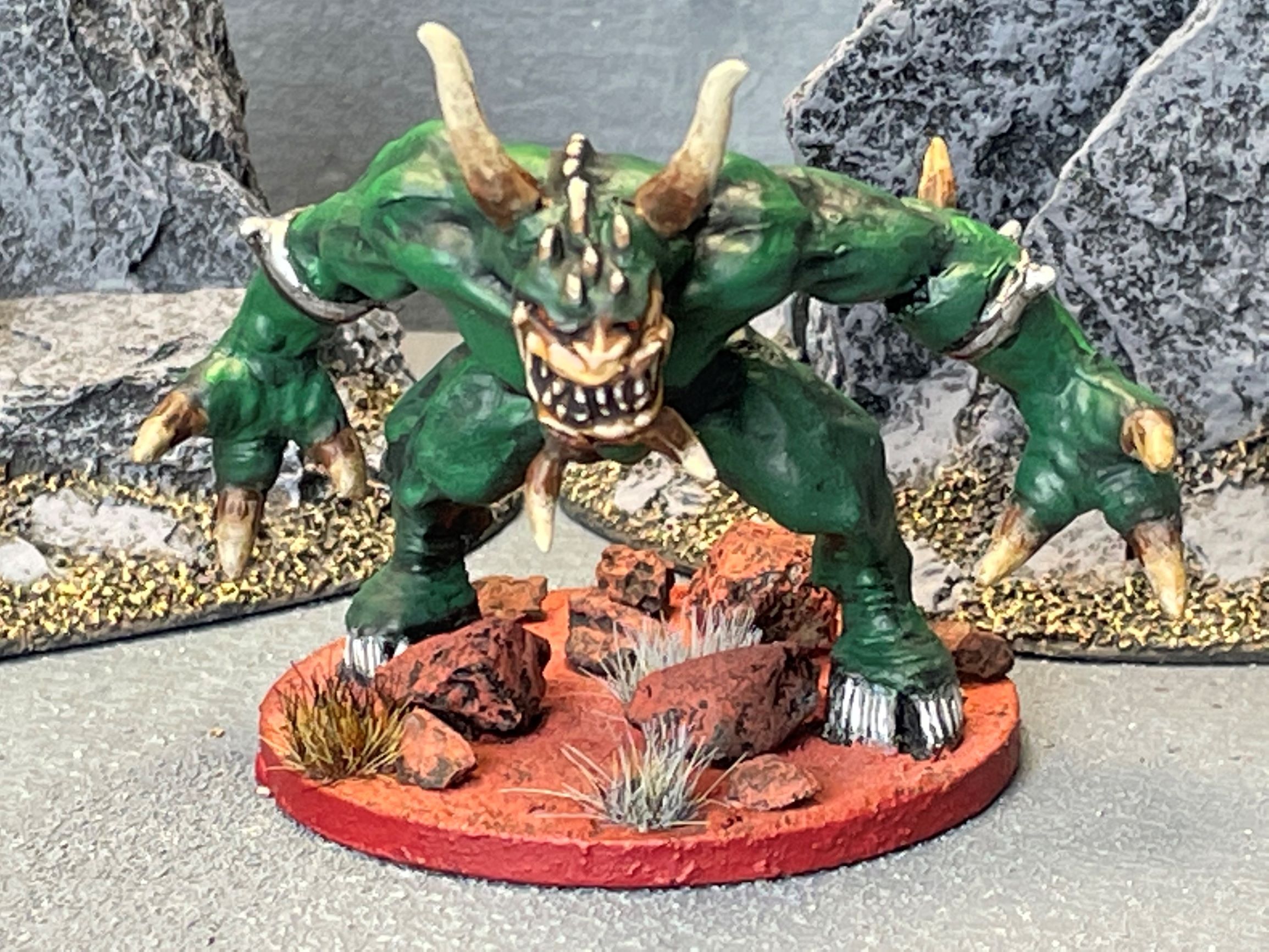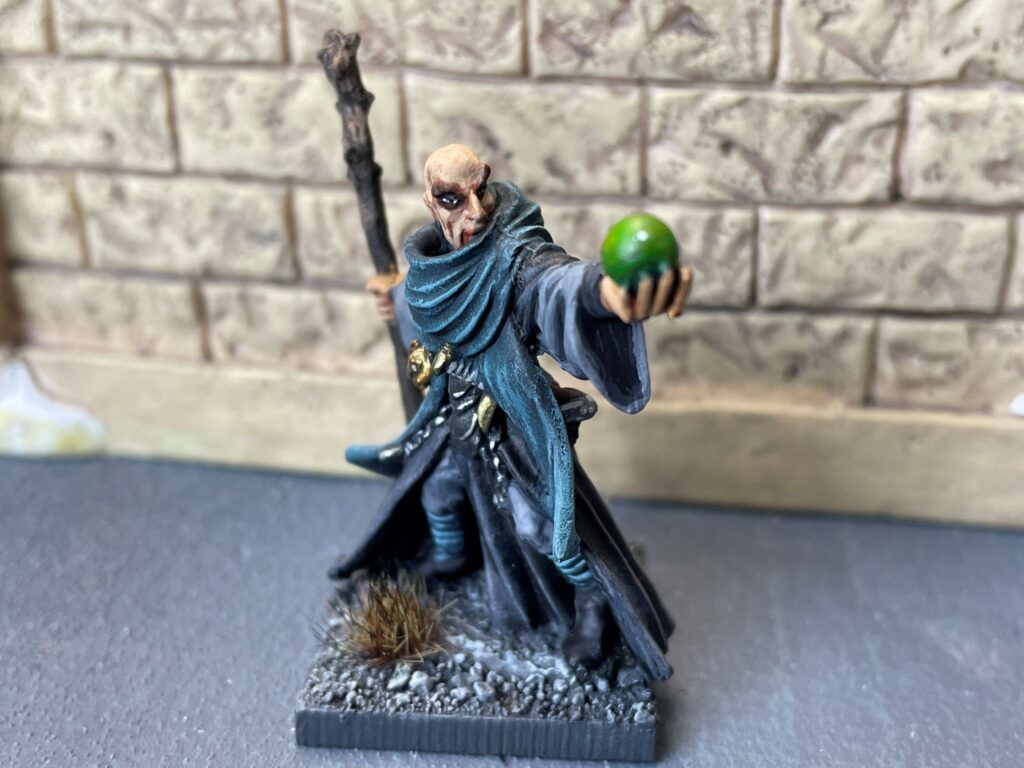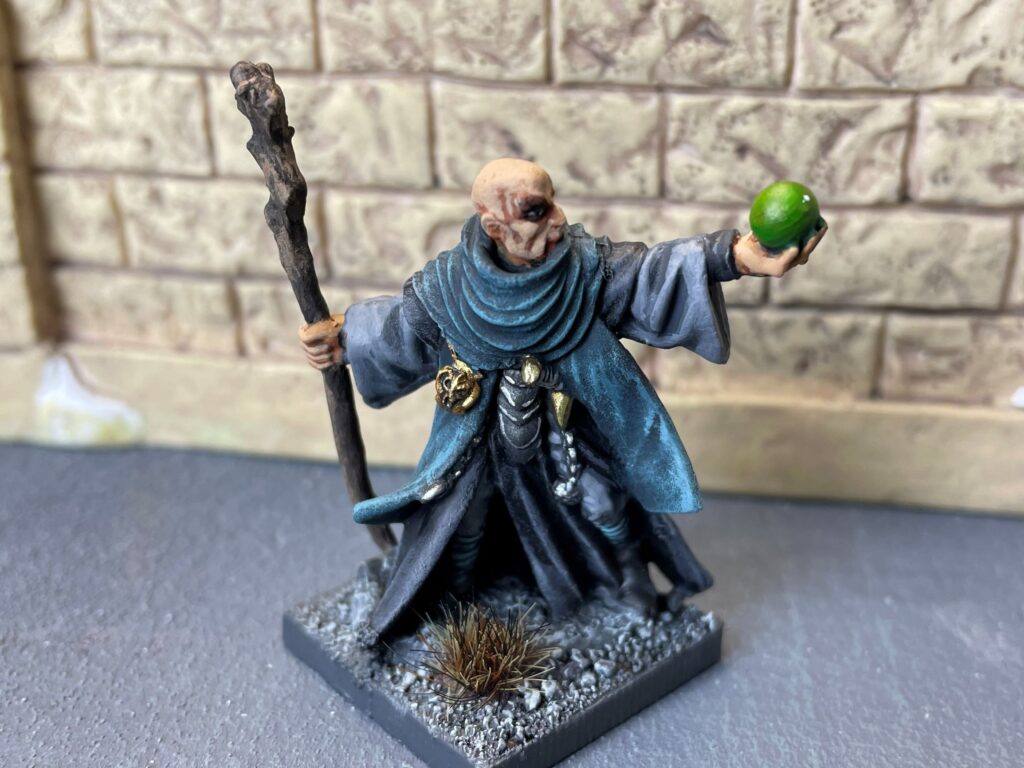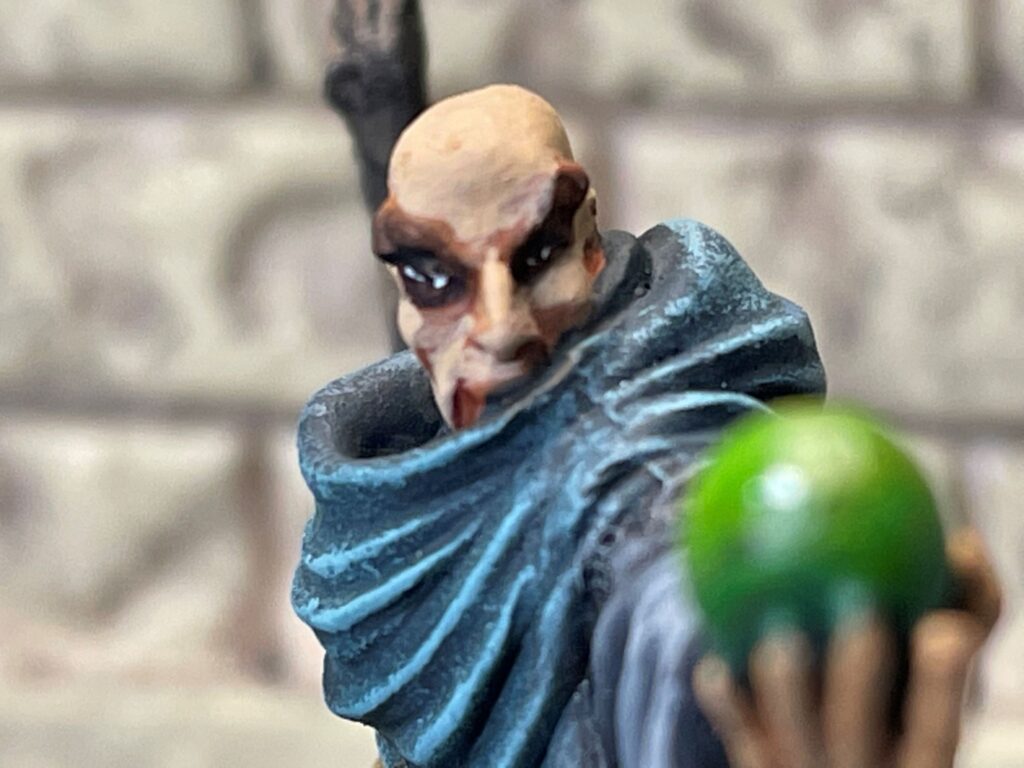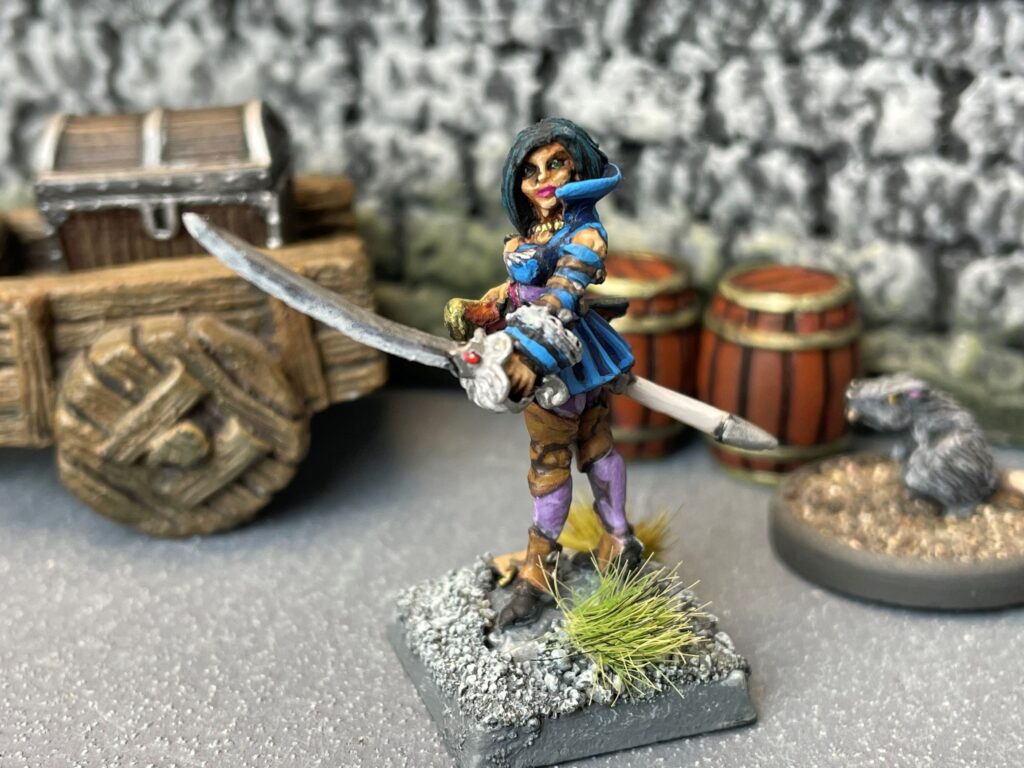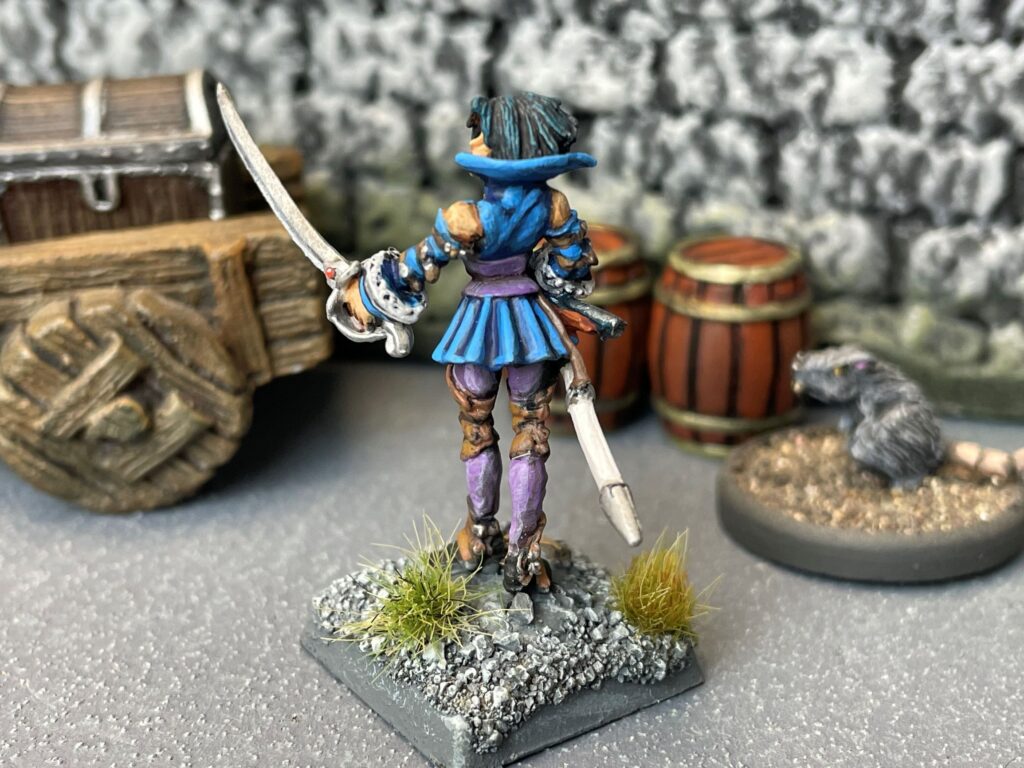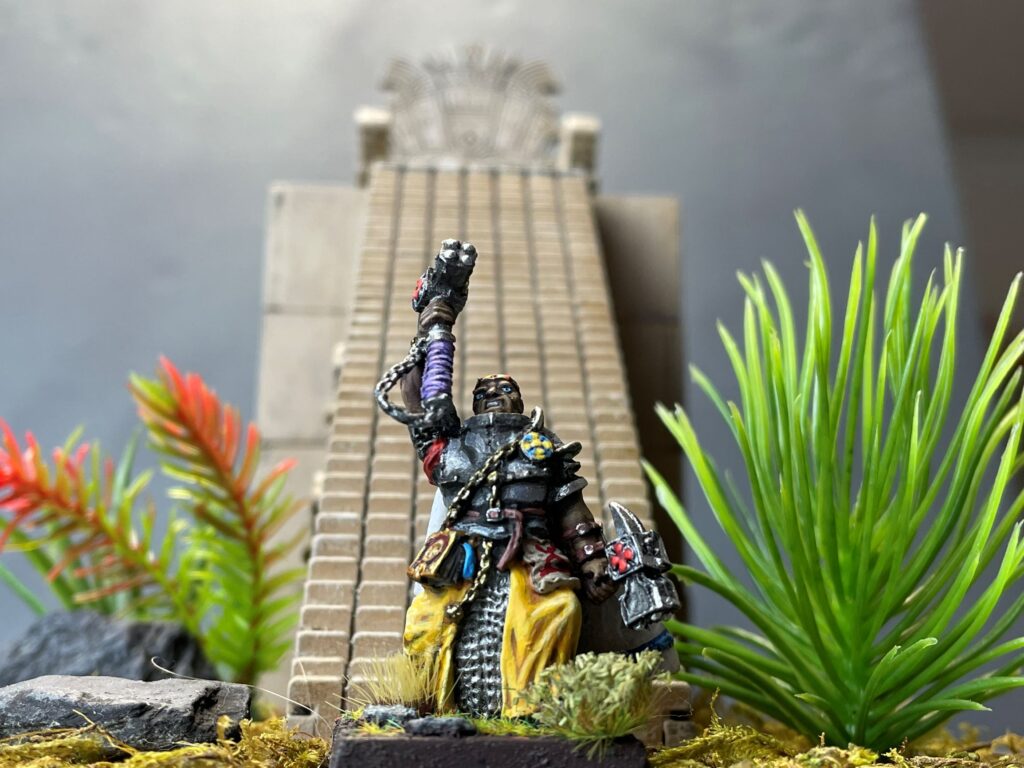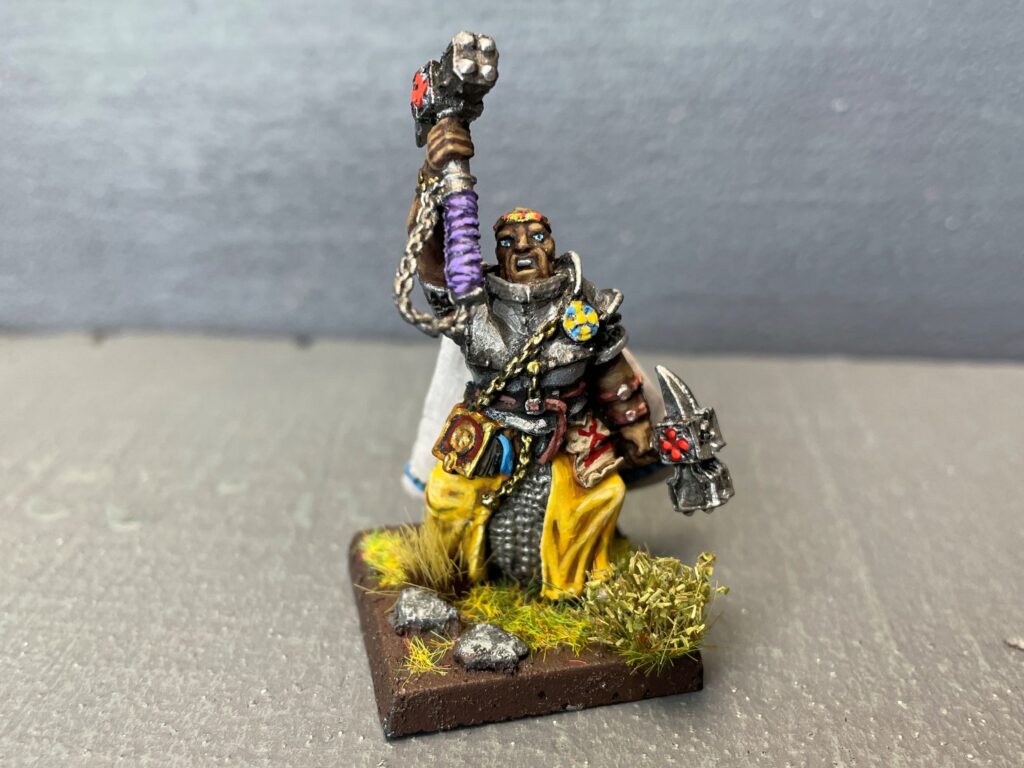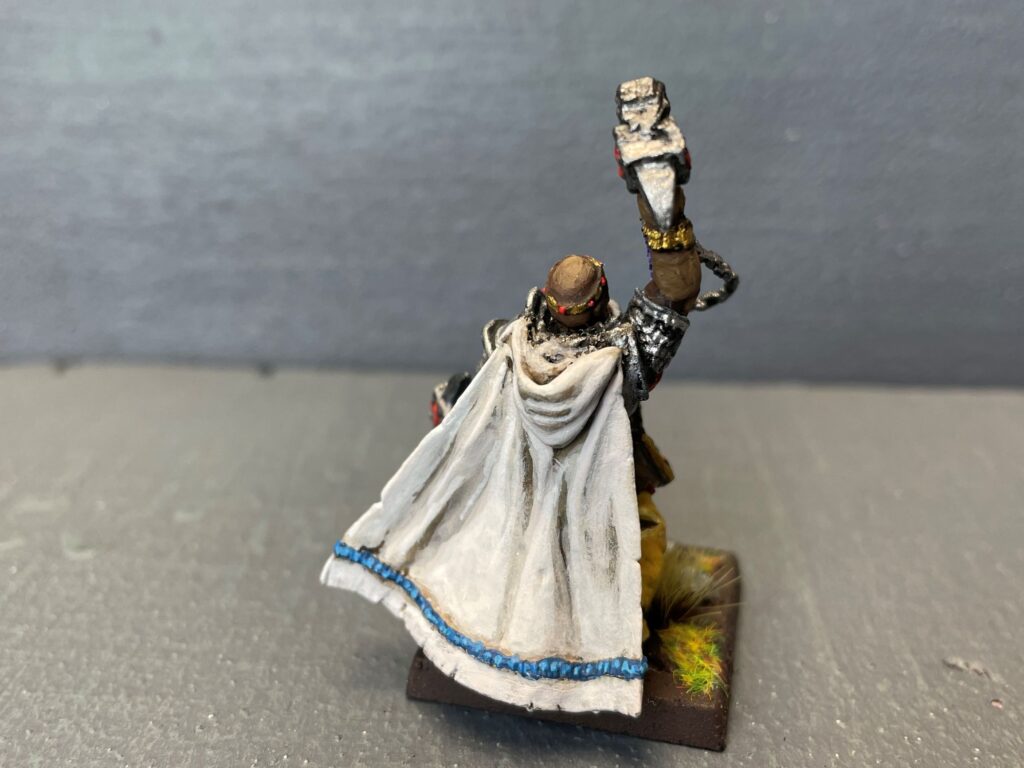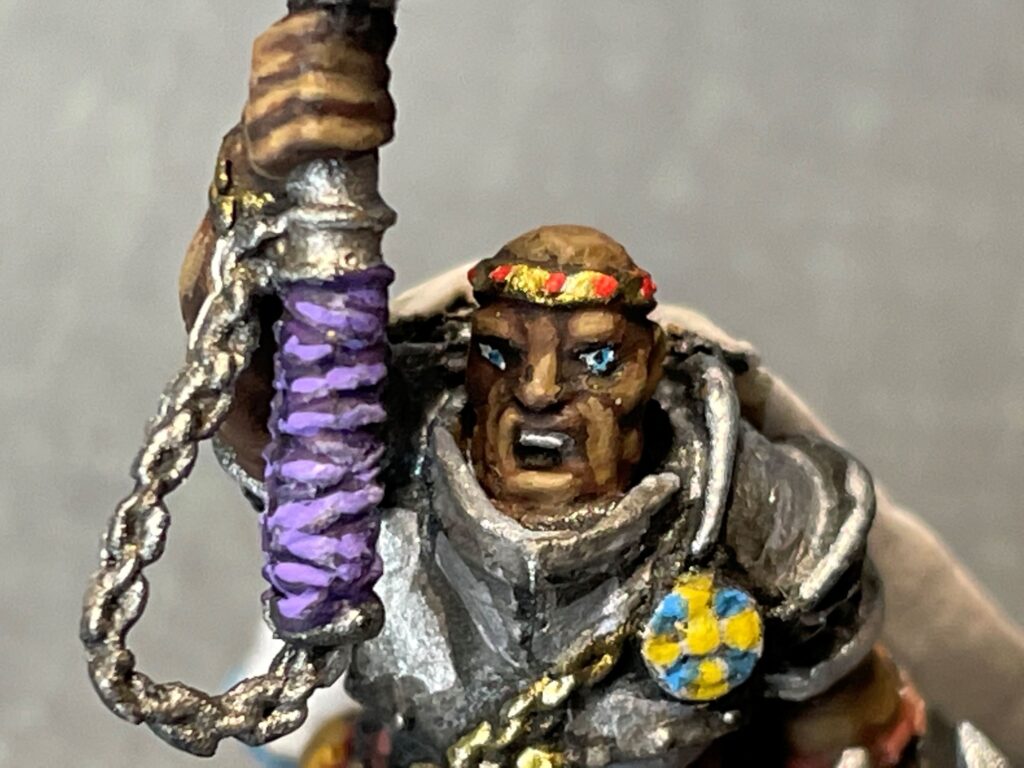For April’s Character of the Month, I decided to do a Bard. Naturally, being me, I chose a piper. I’ve had this particular miniature for at least ten years, sitting quietly in a box with far too many other miniatures that I may or may not ever get to. We only have so many heartbeats, after all…


This miniature is Rhupert Carvolo, Piper of Ord; a Warmachine miniature from Privateer Press. His bagpipes are truly legendary…they look more like a portable calliope or pipe organ than a traditional bagpipe set. In other words, they’re fucking awesome; so I needed a cool backstory. This is what I came up with:
Doval Lakatos was a man of celebration; a minstrel and dancer who could lift even the lowest spirits with just a few notes from his flute or thumps of his drum. As a troubadour, he travelled the roads and byways of Volskad with his people; singing, dancing, and selling the instruments of music he created as only a master craftsman could; often throwing in free lessons for pretty girls. In time, one of these girls, Karin, became his wife; and in time, she bore him a daughter, Mahala, who was his truest joy.
Many winters passed, as, sadly, did Karin; leaving Doval and Mahala to go on together. Mahala grew to be a lovely young woman; blessed with a voice like the sweetest birdsong and a laugh that could chase away storms. It was no surprise when she began to attract the attentions of men. Tragically, one of these men was Baron Drammen Stahl.
Doval Lakatos’s people knew that Stahlmark was a place to be traversed quickly, or better yet, avoided altogether. The people there did not laugh. They had no use for travelers and songs and music; as these were things for other places, places where the Baron did not rule. The Baron was not one to countenance joy in his subjects, only obedience and tribute. He took this tribute in the form of maiden girls, one each year; supposedly to be his brides, yet none were ever seen again. Although Doval Lakatos tried to attract as little attention as possible while travelling through Stahlmark, Mahala was seen by the Baron’s men, and she was taken to him.
Doval Lakatos tried to resist, but how could an old man fight so many of the Baron’s soldiers? Frantic, he cast about for men of courage, anyone who would go with him to bring Mahala back from the Baron. But men of courage were in short supply, especially where Baron Drammen Stahl was concerned. Doval Lakatos raged. He begged and pleaded. And finally, he despaired.
Only a fool or one with nothing to live for would willingly venture into the dark woods to seek The Baba Yaga; but that is what Doval Lakatos did. He found her easily. Why should she make it difficult? The hag always welcomed visitors. And so it was that in a dark clearing lit only by a weak fire, under the watchful, glittering eyes of The Baba Yaga, Doval Lakatos told the hag his story and made his plea. The hag listened while the flickering shadows cast by her obscene, dancing hut played across her hideous visage. The Baba Yaga listened, and she smiled. At the sight of those terrible iron fangs, Doval Lakatos knew real fear.
The Baba Yaga told him that Baron Drammen Stahl was more than a man; that he was a vorvalaka; one of the undead who reveled in cruelty and fed upon the blood of innocents. As such, Mahala was already dead; there was nothing to be done. The Baba Yaga laughed, then; her fetid breath stinking of decayed things and enveloping him like a wet blanket. She told him that she had eaten already this night; but that didn’t mean she was sated. She advised Doval Lakatos should leave her clearing while he still could, and turned her back on him.
But he did not leave. Mahala was all he cared for; all he would ever care for. He told the hag what she wanted to hear: that he would give anything to ensure Mahala lived and the Baron died. The Baba Yaga slowly turned. If he was willing to give that which he loved dearly, then the hag could help him. Doval said he loved nothing more than Mahala; the hag could have anything else. She smiled again, and agreed. And then she told him what he must do.
Doval Lakatos constructed a set of bagpipes according to The Baba Yaga’s instructions, using the finger bones of dead men that she gave him. Instead of dry cane, these hollow bones would serve as bagpipe reeds. She warned him not to play the pipes once they were complete. There could be no testing and tuning of this instrument. These pipes could be played only once, and only in the presence of the Baron. If done correctly, they would provide Doval Lakatos with the opportunity he would need to free Mahala from the Baron’s bondage. Once his daughter was freed, though, Doval Lakatos must present himself to The Baba Yaga so that she could collect payment for her services.
On the night he finished the bagpipes, Doval Lakatos took a pony and rode to the gates of the Baron’s castle in the rain. The Baron’s men mocked him and made to turn him away; until one of them recognized him as the father of the Baron’s newest plaything. Doval Lakatos begged the men to be allowed to perform for the Baron; to see his daughter one last time. Although they knew the Baron had no interest in music, these men were cruel; and thought the Baron would enjoy tormenting the old man for a while before killing him. They let Doval Lakatos into the main ballroom where a feast was laid in front of a roaring fire. The Baron sat upon his throne, and Mahala sat next to him, eyes wide with fear; for she knew that by coming here her father had sealed his own fate.
The Baron Drammen Stahl fixed his gaze upon him and demanded to know his business. Doval Lakatos returned the Baron’s stare without flinching, and asked if he could play his pipes for him and for his daughter one last time, before she ceased to be his daughter and became instead the Baron’s wife. The Baron agreed with a laugh. After all, he said, it would most certainly be the last time. At this, his men laughed, too; anticipating Doval Lakatos’s imminent imprisonment, torture and death.
Doval Lakatos placed the chanter to his lips and blew air into the bellows. It inflated slowly, and the drones began to hum. When all three were in unison, everyone in the Baron’s hall began to feel uneasy. Smiles vanished. Laughter died. Heads began to swim. Bones began to vibrate. Then Doval Lakatos began to play, and the screaming started.
The Baron could feel the power of the pipes. He realized too late that he made a huge mistake. He tried to move, but was powerless to lift even a finger. He could only stare in dawning horror at the old minstrel, the man whose hair was turning white before the Baron’s eyes as he continued to play his deadly tune. Everyone in the hall save Mahala and Doval Lakatos clapped their hands to their ears, desperately trying to drown out the sound. Like the Baron, they stood transfixed, rooted to the spot as blood began to seep from their ruined ears through their fingers and down their cheeks.
Beneath the discordant melody of the pipes other sounds could be heard: screaming, bestial snarls and mad laughter coming from deep below the castle, from the catacombs, where the Baron’s previous wives were interred; a fate surely intended for Mahala, once the Baron tired of her. They burst into the room a short time later; undead things, haggard, filthy and hungry for blood and vengeance. They fell upon the guards and the Baron’s guests, shrieking and tearing into them with ragged claws and broken teeth. The room was soon awash with blood. But they ignored Doval Lakatos and his daughter, who shut her eyes tightly and cowered beneath her chair.
When there were none but he and Mahala left alive in the room, Doval Lakatos finished his tune. He unhooked the pipes from their harness and let the instrument fall to the ground. Then he calmly picked up a fallen sword and approached the Baron, still rooted to his chair, unable to move. With a deft stroke, he cut the Baron’s head from his shoulders and tossed it into the roaring fireplace. Then, he took his daughter by the hand and led her from the castle, through the carnage and the cackling, feasting ghouls, to the pony that waited outside the gates. He kissed and embraced her, then sent her on her way with a heavy heart; for he had a meeting with The Baba Yaga he had to keep, and he did not think he would return.
Once again, the hag was not difficult to find. She was stirring her great mortar and pestle in the shadows of her dancing hut. At the sight of Doval Lakatos, she smiled her terrible grin and beckoned him close. She had felt the passing of the Baron and knew that her evil magic had worked. As such she had the right to claim payment, and claim it she would.
Briefly, The Baba Yaga considered simply swallowing Doval Lakatos whole, as she was hungry again; and he no doubt expected nothing less. But that was not the bargain that was made. No, Doval Lakatos had to lose that which he loved dearly. If not his precious daughter, it could be only one thing.
The Baba Yaga’s curse was powerful, and final. No more would Doval Lakatos compose melodies. No more would he perform with pipe, string or drum. No more could he dance or lift his voice in song; for the price of Mahala’s freedom was Doval Lakatos’s love of music. From that day until the day he died a bitter, miserable man, Doval Lakatos could no longer bear to hear music; every tune, reel, jig or dirge was torture to his ears. He could be a man of celebration no longer; the zils on his tambourine would be forever silent.
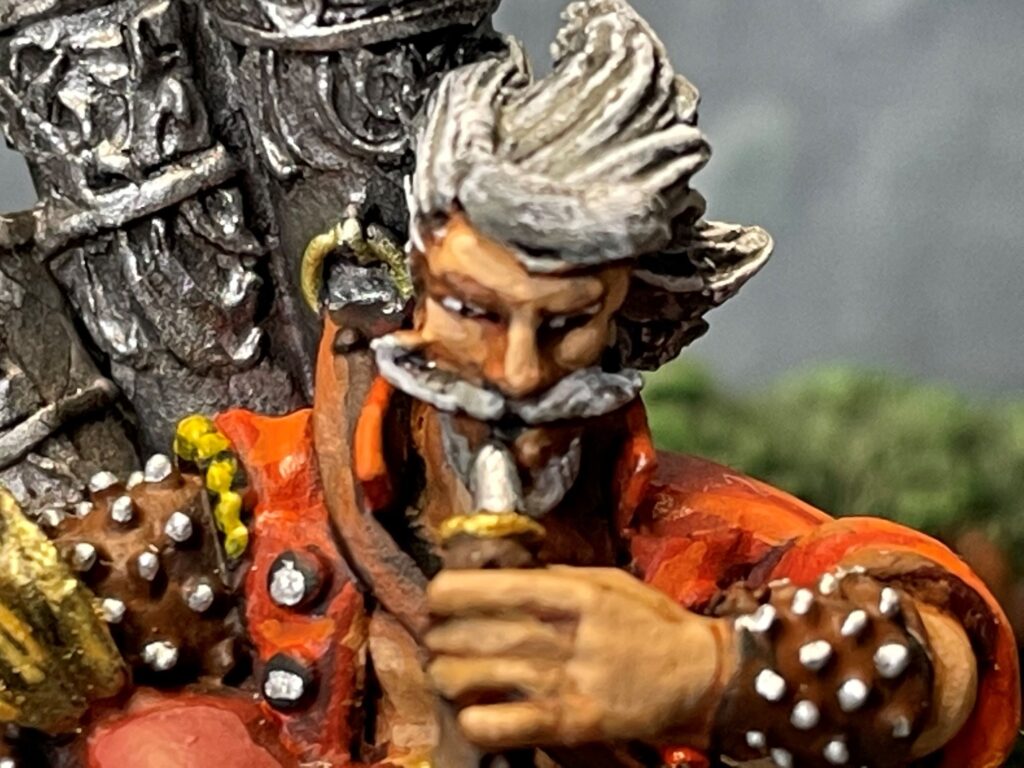
Doval Lakatos never regretted the bargain he made to save Mahala, for she was his truest joy; but there were many times he wished that The Baba Yaga had simply swallowed him whole.
Monster Month starts in five days, and there’s still time to get in on the fun! Just drop me a comment here or email me at angrypiper@angrypiper.com and let me know you want to participate! As of now, we have some of the usual suspects as well as some new faces! Check them out below:
- Roger from Rantings from Under the Wargames Table
- Dave from Wargames Terrain Workshop
- Azazel from Azazel’s Bitz Box
- Tom from The Good Ground
- Mark A. Morin from the appropriately-named Markamorin.com
- Matt from PM Painting
- Jeremy, the Carrion Crow himself;
- and newcomer (to this site, anyway) Mike, aka @sasquatchminis from Instagram!
I have a big project planned, and some stuff left over from last year that I need to get off my desk (yes, really!). Looking forward to seeing what everyone else does!
